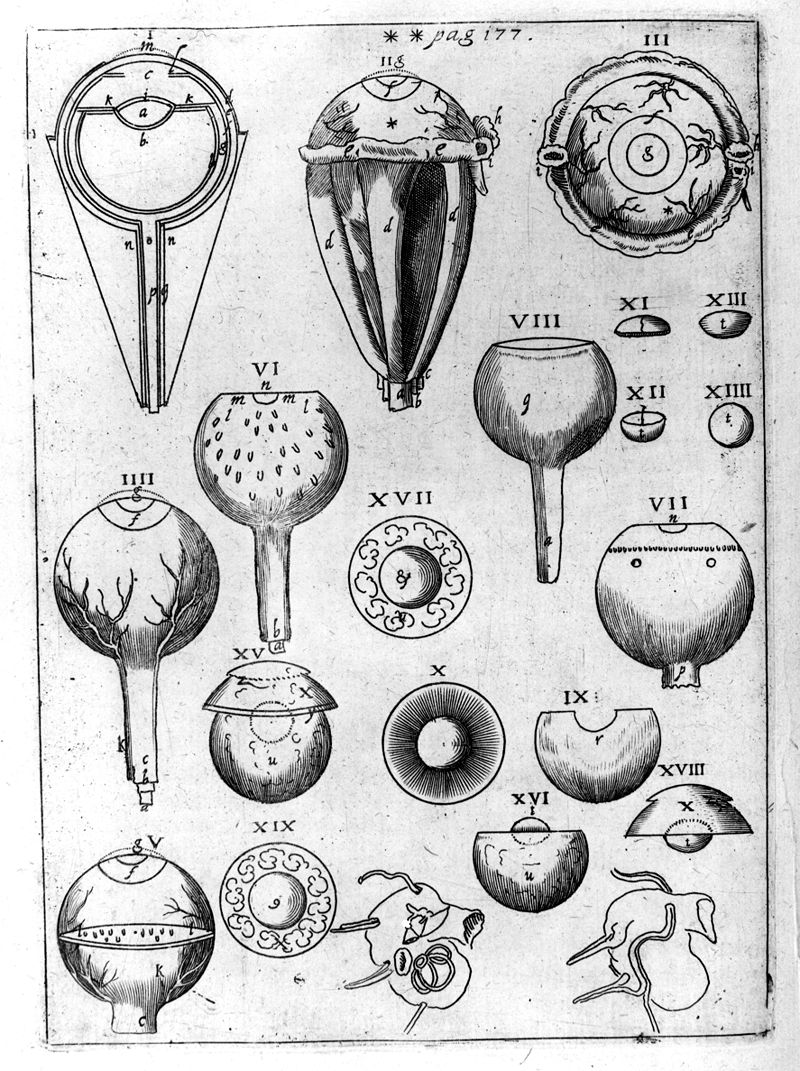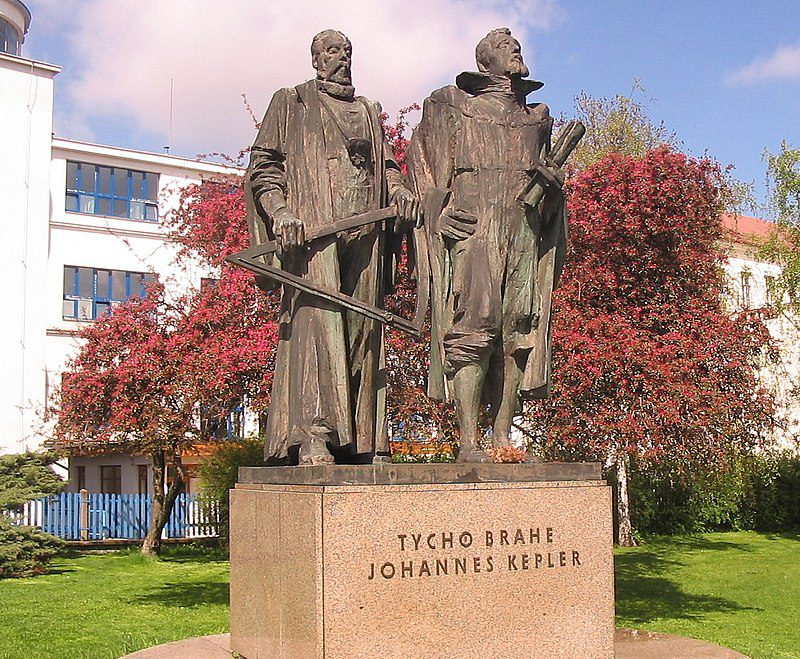Top 15 Interesting Facts about Johannes Kepler
*Originally published by Lynn on August 2022 and Updated by Vanessa R on July 2023
Johannes Kepler was a German astronomer, mathematician, astrologer, natural philosopher and writer on music who is best known for his laws of planetary motion, and his books Astronomia nova, Harmonice Mundi, and Epitome Astronomiae Copernicanae.
Kepler’s works also provided one of the foundations for Newton‘s theory of universal gravitation, which marked the unification of the previously described phenomena of gravity on Earth with known astronomical behaviours.
Below, we discuss the top 15 interesting Facts about Johannes Kepler, the man who discovered that the Earth and planets travel about the sun in elliptical orbits;
1. Kepler was quick to come to this world
Johannes was born prematurely on 27 December 1571, in the Free Imperial City of Weil der Stadt (now part of the Stuttgart Region in the German state of Baden-Württemberg, 30 km west of Stuttgart’s center).
As a child, Johannes Kepler also suffered from smallpox. The disease left with crippled hands and a weak vision. This limited his ability to focus his energies on the observational aspect of astronomy.
He himself claimed to have been weak and sickly as a child.
2. Kepler’s childhood passion

The Great Comet of 1577, seen over Prague on November 12, engraving made by Jiri Daschitzky – Wikipedia
Johannes was introduced to astronomy at an early age and developed a strong passion for it that would span his entire life.
His mother introduced him to astronomy, who took him out at night to show him interesting things in the skies, including the Great Comet of 1577, writing that he “was taken by [his] mother to a high place to look at it.”
In 1580, at age nine, he observed another astronomical event, a lunar eclipse, recording that he remembered being “called outdoors” to see it and that the moon “appeared quite red”.
3. Kepler’s mother was accused of witchcraft
Kepler’s mother, Katharina Guldenmann, was a healer and herbalist who was considered to be a witch. At one point, Kepler had to hire lawyers to defend his mother from being sentenced to death.
The story goes, a certain Ursula Reingold claimed that Kepler’s mother Katharina had made her sick with an evil brew. The dispute escalated, reaching the town’s council, and Katharina was accused of witchcraft.
It was claimed that she had been instructed in magic by an aunt, who had in fact been burned for sorcery. There was a witch hunt going on in the region and Katharina was one of 15 women who were accused.
When she was captured, she was told how she would be tortured, as a means of frightening her, but she refused to confess anything.
Johannes Kepler, who prepared an extensive defense for his mother, played a part in securing her release. Katharina was imprisoned in August 1620, but released 14 months later in October 1621.
4. A lineage accused of witches
It was not only Katharina Guldenmann, Kepler’s mother, who was accused of witchcraft, but also other female relatives of his.
For instance, during Katherine’s trail it was claimed that Katherine had been instructed in magic by an aunt, who had in fact been burned for sorcery.
Kepler’s own grandmother was tried in the Salem Witch Trials and sentenced to death.
5. Kepler’s humble career beginnings
Kepler’s remarkable scientific career had a humble start, as he started out as a math teacher in a seminary in the Austrian city of Graz.
Despite his desire to become a minister, near the end of his studies at Tübingen, Kepler accepted an offer to teach mathematics and astronomy, in April 1594, as a replacement to Georg Stadius at the Protestant school.
While teaching there, he developed an instrumental friendship with Prince Hans Ulrich von Eggenberg, who financed most of his later experiments and inventions.
Through this friendish, Keppler became the chief mathematician of Emperor Rudolf II. At that time, he also met Tycho Brahe in Prague and began a long and fruitful cooperation with him.
6. The strange partnership that revolutionized science
Kepler had a tumultuous relationship with Danish astronomer Tycho Brahe; but it was the accurate planetary data of Brahe that enabled Kepler to make his great discoveries in astronomy.
Tycho Brahe was a Danish astronomer, known for his accurate and comprehensive astronomical observations. Kepler become Tycho’s assistant in about 1600.
The two had different personalities, with Tycho being arrogant and merciless towards his opponents and Kepler being self-effacing and self-disparaging, referring to himself as a “housedog” and a “worm”.
Upon Tycho Brahe’s untimely death in 1601, his data fell into the hands of his mathematically gifted assistant. Through the use of this data, he was able to rise to the ranch of Imperial Mathematician in Prague.
7. Kepler was deeply religious
Kepler incorporated religious arguments and reasoning into his work, motivated by the religious conviction and belief that God had created the world according to an intelligible plan that is accessible through the natural light of reason.
He regarded his three laws of planetary motion as celestial harmonies that reflected God’s design for the universe. In his famous work Harmonices Mundi, he found harmonies in nature to claim that the Earth has a soul because it is subjected to astrological harmony.
It was while finding these harmonies that Kepler discovered what came to be known as the third law of planetary motion: that the square of the orbital period of a planet is proportional to the cube of the semi-major axis of its orbit.
8. Kepler laid the foundation of modern optics

A plate from Astronomiae Pars Optica, illustrating the structure of eyes of various species – Wikipedia
Apart from his laws of planetary motion, Kepler made important contributions to optics, including formulation of the inverse-square law governing the intensity of light.
Kepler was able to invented his own version of the refracting telescope, which helped him understand the structure and working of the eye.
9. NASA’s First Planet Hunter
William Borucki at NASA’s Ames Research Center begins researching the potential of finding Earth-size planets beyond our solar system by searching for the slight dips in starlight as a planet crosses in front of its star — a technique called “transit photometry.”
After four rejections by NASA, in 2001 the Kepler space telescope mission is at last approved as NASA’s tenth Discovery-class mission. The scientific goal is an exploration of the structure and diversity of planetary systems including Earth-size planets in the habitable zone surrounding other stars, the region where liquid water could pool on the surface and support life.
On 6th March 2009, NASA’s Kepler space telescope is launched. Kepler observed 530,506 stars and detected 2,662 planets.
10. The mystery surrounding Kepler
Johannes Kepler passed away on November 15th, 1630 in Regensburg after suffering with fever. He was buried at the local cemetery.
Unfortunately, the exact location of Kepler’s grave was lost for good during the Thirty Years’ War between Germany and Sweden after the Swedish army destroyed the churchyard.
11. He married a widow
Kepler started pursuing Barbara Müller, a widowed 23-year-old, in December 1595. While Kepler was poor, Barbara’s father, a prosperous mill owner, opposed the relationship. He eventually gave up, and on April 27, 1597, Johannes Kepler married Barbara Muller.
They welcomed a daughter, Susanna (1602), and two sons, Friedrich (1604) and Ludwig (1606), after their first two children died at birth (1607). Kepler’s wife Barbara and son Friedrich both passed away in 1611 as a result of illness. Barbara and Kepler are thought to have had a difficult marriage.
12. After his wife’s death, Kepler had 11 different matches over two years
During the next two years, he thought about 11 potential matches after she passed away. As she won him over with “love, humble loyalty, economy of household, diligence, and the love she gave the stepchildren,” he went back to the fifth match. Susanna Reuttinger, age 24, and Johannes Kepler were married on October 30, 1613.
The next three, Cordula (1621), Fridmar (1623), and Hildebert, survived their first three children’s early deaths (1625). The second marriage of Kepler is seen as fruitful.
13. He was Imperial Mathematician to the Holy Roman Emperor

Matěj Baťha, CC BY-SA 3.0, via Wikimedia Commons
Tycho Brahe was a well-known Danish astronomer noted for his accurate planetary observations. He had the most prestigious position in mathematics in Europe as Imperial Mathematician to the Holy Roman Emperor. However, Tycho was a well-known brawler, and Kepler had written Nicolaus Reimers, a fierce rival of Brahe, a letter of praise. Tycho invited Kepler to work with him in February 1600, but the two did not get along. Yet, they ultimately came to an understanding since they each understood how important the other was.
The same year Kepler relocated to Prague, where he assisted Tycho for the majority of 1601. Although Tycho resisted sharing all of his detailed findings with Kepler during this time, they were at conflict constantly. On October 24, 1601, Tycho mysteriously passed away, and Kepler was named his successor as Imperial Mathematician two days later.
14. Kepler wanted to become a protestant minister

non identifié d’après Adrien Féart, Public domain, via Wikimedia Commons
Kepler received formal education in Latin, which was the language of scholars, lawyers, and churchmen in all of Europe. He went to the Maulbronn Protestant Seminary with the intention of becoming a Protestant minister.
He transferred to the University of Tübingen after successfully finishing his studies at Maulbronn. He took classes in Theology, Greek, Hebrew, and Philosophy there, but it was in Mathematics that he really shone out. He was one of the select few pupils deemed mathematically and mentally qualified to study Copernican theory. Copernicus’ heliocentric idea, according to which the sun is at the centre of the solar system, was confirmed by Kepler. At the age of 23, Kepler accepted a position as a mathematics and astronomy lecturer at the Evangelical School in Graz, Austria.
15. Keppler disagreed with Galileo’s work
Kepler disagreed with Galileo over the reason for Earth’s tides, despite the fact that he greatly liked his work. Galileo thought that the earth’s rotation was to blame for them. Kepler correctly deduced that the moon was responsible for them. Kepler described a “magnetic force,” which we now refer to as gravity.
Planning a trip to Paris ? Get ready !
These are Amazon’s best-selling travel products that you may need for coming to Paris.
Bookstore
- The best travel book : Rick Steves – Paris 2023 – Learn more here
- Fodor’s Paris 2024 – Learn more here
Travel Gear
- Venture Pal Lightweight Backpack – Learn more here
- Samsonite Winfield 2 28″ Luggage – Learn more here
- Swig Savvy’s Stainless Steel Insulated Water Bottle – Learn more here
Check Amazon’s best-seller list for the most popular travel accessories. We sometimes read this list just to find out what new travel products people are buying.


















